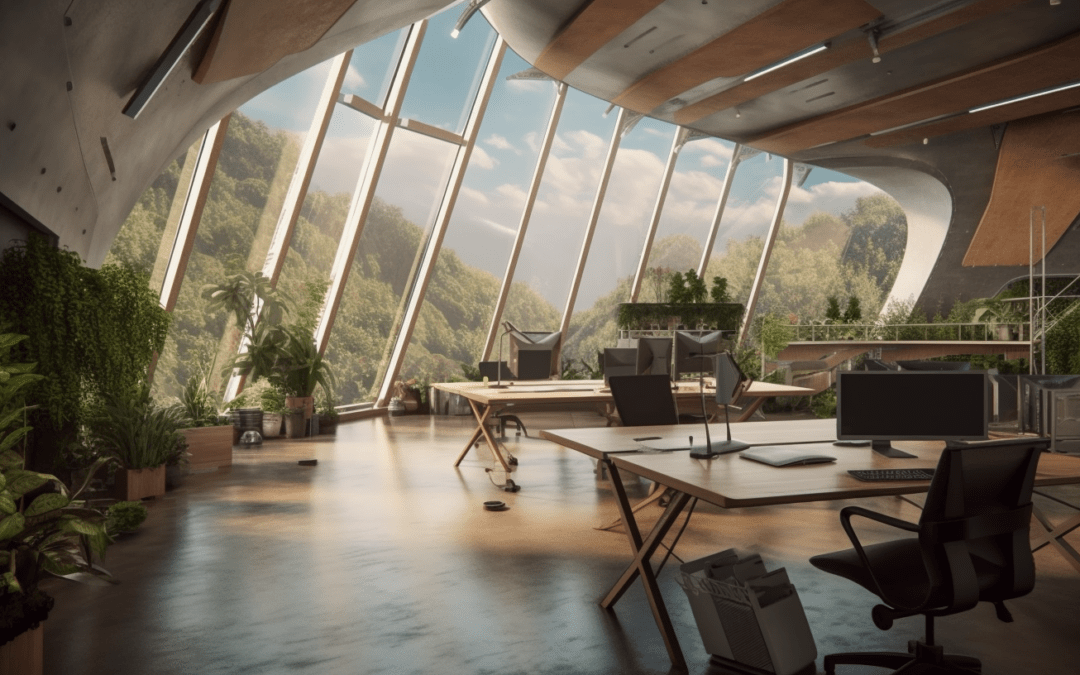Wouldn’t it be nice to have a crystal ball that shows what is going to happen in government? That might be a lot to ask. What about just where government employees are going to work? Even that is a tall order. Let’s assume we aren’t trying to predict it. Instead, let’s try to create it.
The Current Government Office Landscape
Some conflicting initiatives are going on. The General Services Agency had been downsizing the government’s footprint for a while because remote work resulted in lower utilization. But recently, cuts have increased even more with the current administration canceling roughly 10% of all commercial leases for the Federal Government. At the same time, Federal Agencies are being directed to have people return to work in the office. At just the FDA, they are seeing an issue where there are only about 6000 parking spaces for 10,000 staff. It’s a common scenario playing out in other parts of the government as well. If you were wondering, Americans waste $73 billion a year looking for parking spots. Some FDA employees had to park a mile or more from the office.
State-level government Offices Too
Many state governments are also telling workers to return to the office to do their work. This is despite the research that shows that workers are about 4% more productive and 11% happier with remote and hybrid relationships. Workers are returning to offices that in many cases no longer have the surrounding ecosystem that supported them previous to 2020. Restaurants and cleaning companies are closed. Parking costs are rising to cover losses from the Covid years. In San Francisco, their city-owned garages saw a 94% decrease in revenue as a result of Covid. New York City lost an estimated $590 Million in parking revenue in 2020. The average cost of one day of parking in Manhattan is now $69 per day.
Also, building maintenance has probably been ignored so spaces may need a refresh. This can be a costly endeavor, as well as a step back for many workers. Most home offices have ergonomic furniture with multiple monitor setups. Going back to an office with just a 17-inch laptop monitor can be a step back. And lets not forget about having to listen to your coworkers while they are on the phone. We got pretty good at it when we were in the office, but once you get used to real focused time, it can be like fingernails on a chalkboard.
The Government Office you have…
Is not the office you need. Some leaders seem to think that space utilization will go back to pre-2020 levels and patterns. This is a costly position to maintain and the sooner you realize it isn’t going to happen, the better for everyone. In a 2018 GAO study to reduce government space, they found that some agencies had an average of 420 sq ft per employee. They recommended getting that down to about 250. In a later GSA presentation, they lowered recommendations to an average of 180 sq ft per employee. They also started looking at how people used the space. (Notice the square footage is going down). in 2023, the GSA shared a vision for both a modernized and optimized workplace. They realize that what they have is not what they need.
The Government Office You Need
Let’s look at the two overlapping objectives for the future government workplace that GSA recommended in 2023.
Modernized – it should support effective mission achievement and provide a quality experience for employees. This means accounting for flexible in-office and out-of-office options. Technology should be leveraged wherever possible and physical spaces should have a universal design. The work environment should be healthy in terms of air quality, temperature, lighting, etc. Preferably, spaces and practices should be sustainable. They should be energy and water-efficient, and resilient to variations in the climate. And most importantly, they should be physically and digitally safe with redundancy built in for emergencies.
Optimized – the real estate portfolio should ensure value for the taxpayers. (when was the last time your state or municipality asked that question?) It should be designed for the mission of the organization and focused on a results-driven, customer-focused, and technology-enabled space. Attention should be paid to how and when space is used. It’s not just a space for everyone to have an individual desk. There should also be an understanding of how the organization works and what makes sense to balance headquarters and regional presences with distributed work.
Your Next Steps
You would think these are goals that everyone could get behind. The question is where do you start? Assume nothing, and ask the people who are doing the work. Don’t try to impress your superiors with presenteeism. Showing up in the office for the sake of showing up doesn’t benefit anyone. When the average cost of a full-time desk for one person is somewhere between $11,000 and $17,000 annually, rightsizing an office is what’s best for taxpayers.
Based on how people use offices designed before 2020, most organizations only need about 40% of the space if they support a flexible hybrid model. It could be even less if people spend more time remote. Think of what you can save taxpayers if you can reduce your office costs by 60%. Here’s a checklist to get you started. Remember, the best way to predict the future is to create it.



